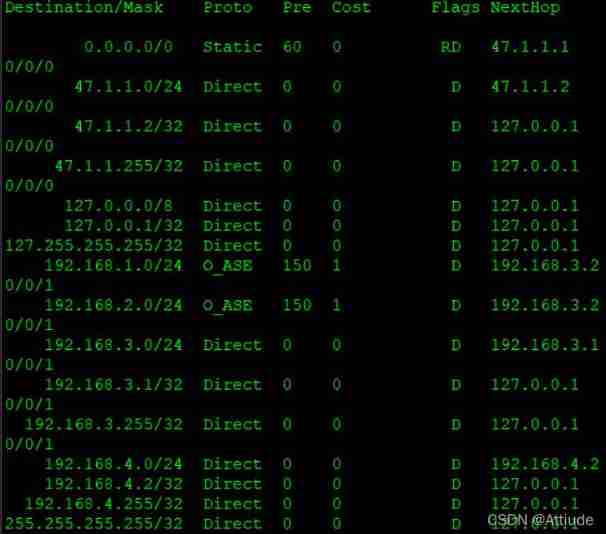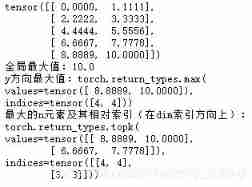当前位置:网站首页>Snake (C language)
Snake (C language)
2022-07-04 10:27:00 【Lol only plays Timo】
Snake project
The core algorithm : Circular array , Licensing algorithms , One dimensional transformation of two-dimensional coordinates
Compile environment :TC 2.0
preparation : Study gotoxy() function , understand bioskey() Function USES , know bioskey(1) And bioskey(0) The difference between , Understand keyboard scan code , And know how to use .
The core work :1. Understand the subscript cycle law of circular array
2. Understand the core code of licensing algorithm
3. Master how to deal with two-dimensional coordinates in one dimension , And the transformation between the two
that , First of all, let's get to know gotoxy() This function :
gotoxy (int x, int y) yes Borland C Extended function library conio.h A function declared in , The function is to move the cursor to the specified position . In Contemporary Visual C++ or GCC You can customize this function in . In the last century 80-90 The popular integrated development environment in the s Turbo C or Borland C Extended function library in conio.h Provides gotoxy function , For screen output , The function is to cursor Move to the specified position on the screen . The upper left corner of the screen is defined as the coordinate origin of the cursor (0, 0), The horizontal direction is X Axis , Vertical is Y Axis .
Because we are Turbo C Environment , So it should be written when using #include <conio.h> This header file .
Next let's look at bioskey() This function :
The function prototype :int bioskey (int cmd)
explain :bioskey() The prototype of the function is bios.h in
bioskey() Complete direct keyboard operation ,cmd The value of determines what operation to perform .
cmd = 0:
When cmd yes 0,bioskey() Returns the next value typed on the keyboard ( It will wait until a key is pressed ). It returns a 16 The binary number of bits , Include two different values . When you press a normal key , It's low 8 Number of digits to store the character ASCII code , high 8 Bit stores the scan code of the key ; For special keys ( Such as direction keys 、F1~F12 wait ), low 8 Position as 0, high 8 Bit bytes store the scan code of the key .
cmd = 1:
When cmd yes 1,bioskey() Query whether to press a key , If a key is pressed, a non-zero value is returned , Otherwise return to 0.
The important thing is bioskey() After function detection, the key value of this key is left in the keyboard buffer , If necessary, you can take it out of the keyboard buffer .
After finishing the preparatory work , We begin with the first core algorithm — Licensing algorithms
for example :
int arr[10] = {1,5,9,3,7,2,8,4,0,6};
From here 10 Select six completely random and absolutely non repeating numbers .
n Elements , Random generation 0 To n-1 The subscript , Adjust the selected elements ( In exchange for ) At the end of , Make the subscript of unselected elements , stay 0 To n-2 Between , The next round of random generation 0 To n-2 The subscript , So back and forth .
The code example is as follows :
#include <stdio.h>
#include <stdlib.h>
#include <time.h>
void swap(int *p, int *q);
void swap(int *p, int *q) {
int temp;
temp = *p;
*p = *q;
*q = temp;
}
int main() {
int arr[10] = {
3,8,1,2,0,9,6,5,7,4};
int i;
int index;
int n = 10;
srand((unsigned) time(NULL));
for(i = 0; i < 6; i++) {
index = rand()%n;
printf("%d\t",arr[index]);
swap(&arr[index],&arr[n--]);
}
}
The next core algorithm is the circular array , The purpose is to realize the movement of snakes , The reason for using arrays instead of linked lists is that there is no need , Don't bargain , Array operation is simpler and more convenient than linked list .
Compared with ordinary arrays , It is more convenient for snakes to move , The time complexity will also be reduced .
How to make subscripts cycle ? Here's a formula :
headIndex( Snake head coordinates ) = (index + Length of array + 1)% Length of array
tailIndex( Snake tail coordinates ) = (index + Length of array - The length of the snake + 1)% Length of array
Move the snake
Use a circular array to store the lines of each point of the snake's body , Column coordinates
A snake head is initially displayed , Slowly increasing , Until it is equal to the set length of the snake
The process of snake moving :
1.if( Current length < The length of the snake itself ) {
Current length ++;
} else {
Tail elimination ;
}
2. Neck modification : Draw the body of the snake on the original place of the snake's head
3. Picture head
One dimensional transformation of two-dimensional coordinates :
i,j
1,1 1,2 1,3 1,4 2*4 Two dimensional array of 4:COL_COUNT
0 1 2 3
2,1 2,2 2,3 2,4
4 5 6 7
index( Subscript ) = (i-1) *COL_COUNT+(j-1)
i = t / COL_COUNT + 1
j = t % COL_COUNT + 1
Part of the source code is as follows :
#include <stdio.h>
#include <bios.h>
#include <conio.h>
#include <stdlib.h>
#include <time.h>
#include "keyValue.h"
#include "snakeValue.h"
const int delta[][2] = {
{
0, -1},
{
0, 1},
{
-1, 0},
{
1, 0},
};
void keyOperate(ARG *arg);
boolean moveSnake(ARG *arg, SIT *sit, int *map);
void printHead(ARG *arg);
void produceFood(ARG *arg, SIT *sit, int *map);
void swap(int *p, int *q);
void printMap(int *map);
void printMap(int *map) {
int i;
int x;
int y;
int j;
for(i = 0; i < 2000; i++) {
x = i % COL_COUNT + 1;
y = i / COL_COUNT + 1;
if((x == 26 || x == 55) && ((y >= 4 && y <= 8)||(y >= 18 && y <=22))) {
map[i] = 4;
for (j = 0; j < 6; j++) {
gotoxy(x,y);
printf("%c",254);
}
}
if((y == 8 || y == 18) && ((x >= 6 && x <= 26) || (x >= 55 && x <= 74))) {
map[i] = 4;
for(j = 0 ; j < 20; j++) {
gotoxy(x,y);
printf("%c",254);
}
}
if(map[i] == 3) {
gotoxy(x,y);
printf("%c",254);
}
}
}
void swap(int *p, int *q) {
int temp;
temp = *p;
*p = *q;
*q = temp;
}
void produceFood(ARG *arg, SIT *sit, int *map) {
int foodMap[2000] = {
0};
int i;
int x;
int y;
int index = 0;
int q;
srand((unsigned) time(NULL));
for (i = 0, q = 0; i < 2000; i++) {
if (map[i] == 0) {
foodMap[q] = i;
q++;
}
}
q++;
for (i = 0; i < 10; i++) {
index = rand()%q;
map[foodMap[index]] = 2;
x = foodMap[index] % COL_COUNT + 1;
y = foodMap[index] / COL_COUNT + 1;
gotoxy(x,y);
printf("%c",157);
swap(&foodMap[index],&foodMap[--q]);
}
}
void printHead(ARG *arg) {
if (arg->direct == LEFT ) {
printf("<");
}
if (arg->direct == RIGHT ) {
printf(">");
}
if (arg->direct == UP ) {
printf("^");
}
if (arg->direct == DOWN ) {
printf("v");
}
}
boolean moveSnake(ARG *arg,SIT *sit,int *map) {
int tailIndex;
int x;
int y;
int index;
tailIndex = (arg->headIndex + MAXLEN - arg->length + 1) % MAXLEN;
if(arg->curLength < arg->length) {
arg->curLength++;
} else {
gotoxy(sit[tailIndex].row,sit[tailIndex].col);
printf(" ");
index = (sit[tailIndex].row - 1) * COL_COUNT + (sit[tailIndex].col - 1);
map[index] = 0;
}
index = (sit[arg->headIndex].col - 1) * COL_COUNT + (sit[arg->headIndex].row - 1);
gotoxy(sit[arg->headIndex].row,sit[arg->headIndex].col);
printf("%c",233);
map[index] = 5;
x = sit[arg->headIndex].row;
y = sit[arg->headIndex].col;
arg->headIndex = (arg->headIndex + MAXLEN + 1) % MAXLEN;
sit[arg->headIndex].row = x + delta[arg->direct][0];
sit[arg->headIndex].col = y + delta[arg->direct][1];
index = (sit[arg->headIndex].col - 1) * COL_COUNT + (sit[arg->headIndex].row - 1);
if(map[index] == 2) {
arg->eatCount++;
arg->length++;
}
if(map[index] == 3 || map[index] == 4 || map[index] == 5) {
return FALSE;
}
map[index] = 1;
gotoxy(sit[arg->headIndex].row,sit[arg->headIndex].col);
printHead(arg);
return TRUE;
}
void keyOperate(ARG *arg) {
if (arg->key == KEY_UP) {
arg->direct = UP;
} else if (arg->key == KEY_DOWN) {
arg->direct = DOWN;
} else if (arg->key == KEY_LEFT) {
arg->direct = LEFT;
} else if (arg->key == KEY_RIGHT) {
arg->direct = RIGHT;
} else if (arg->key == KEY_ESC) {
arg->finished = TRUE;
} else if (arg->key == KEY_ADD) {
if(arg->delayTime > 1000) {
arg->judgeSpeed = -1000;
}
}else if (arg->key == KEY_SUB) {
if(arg->delayTime < 15000) {
arg->judgeSpeed = 1000;
}
} else if(arg->key == KEY_SPACE) {
arg->gameOut = !arg->gameOut;
}
}
You can leave a message below if you need the source code , If you think there is anything else you can improve the code , You can also communicate below .
边栏推荐
猜你喜欢
![[200 opencv routines] 218 Multi line italic text watermark](/img/3e/537476405f02f0ebd6496067e81af1.png)
[200 opencv routines] 218 Multi line italic text watermark

uniapp 小于1000 按原数字显示 超过1000 数字换算成10w+ 1.3k+ 显示

Seven examples to understand the storage rules of shaped data on each bit

MPLS: multi protocol label switching

Basic principle of servlet and application of common API methods

5g/4g wireless networking scheme for brand chain stores

Hands on deep learning (III) -- Torch Operation (sorting out documents in detail)

The time difference between the past time and the present time of uniapp processing, such as just, a few minutes ago, a few hours ago, a few months ago

Tables in the thesis of latex learning

Online troubleshooting
随机推荐
Basic data types of MySQL
RHCE - day one
A little feeling
Exercise 7-8 converting strings to decimal integers (15 points)
leetcode1-3
Doris / Clickhouse / Hudi, a phased summary in June
Idea SSH channel configuration
Ruby time format conversion strftime MS matching format
Dynamic address book
Work order management system OTRs
Uniapp--- initial use of websocket (long link implementation)
2021-08-10 character pointer
Dos:disk operating system, including core startup program and command program
Latex learning insertion number - list of filled dots, bars, numbers
Four characteristics and isolation levels of database transactions
【Day1】 deep-learning-basics
The time difference between the past time and the present time of uniapp processing, such as just, a few minutes ago, a few hours ago, a few months ago
Safety reinforcement learning based on linear function approximation safe RL with linear function approximation translation 1
Intelligent gateway helps improve industrial data acquisition and utilization
Rhcsa day 9